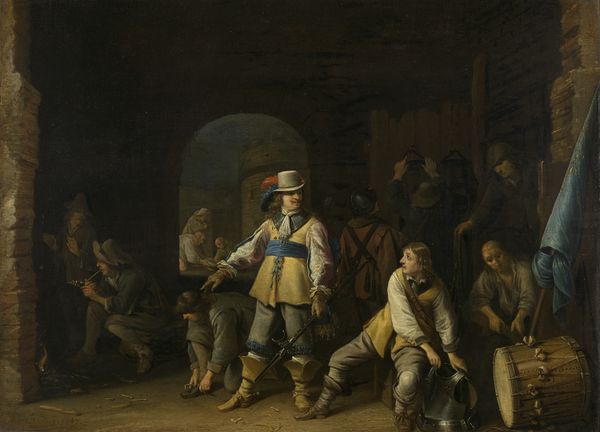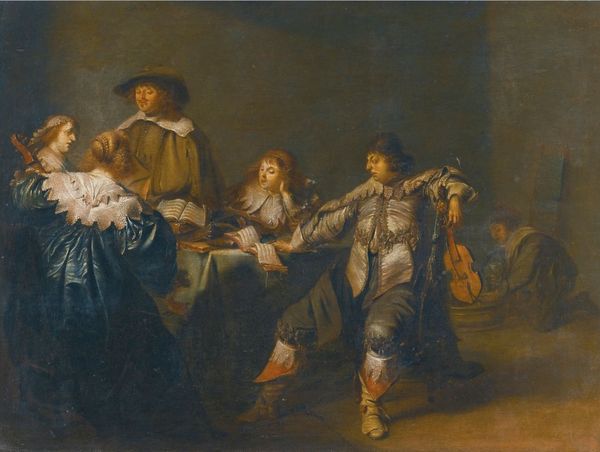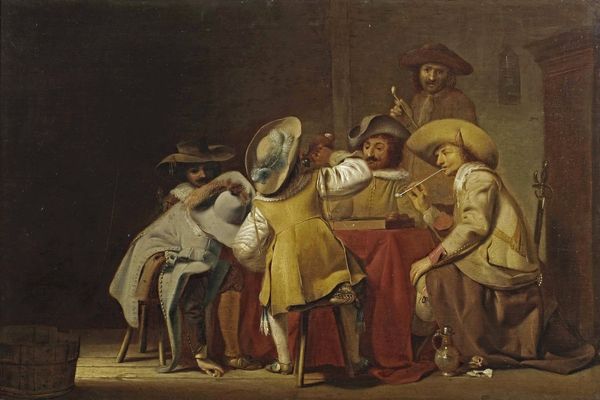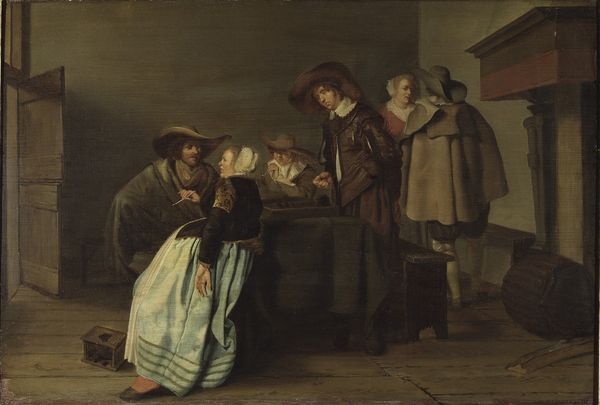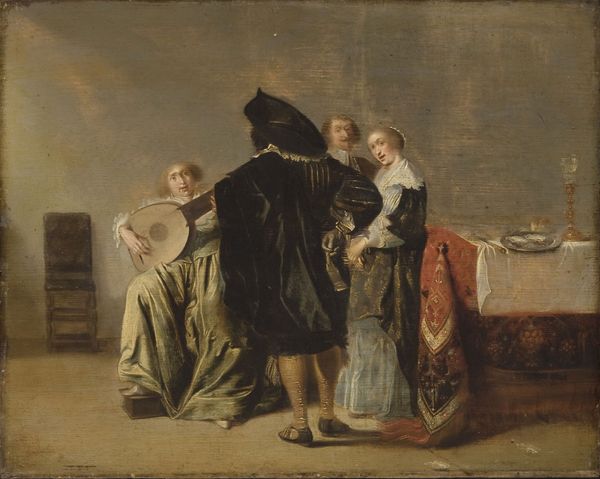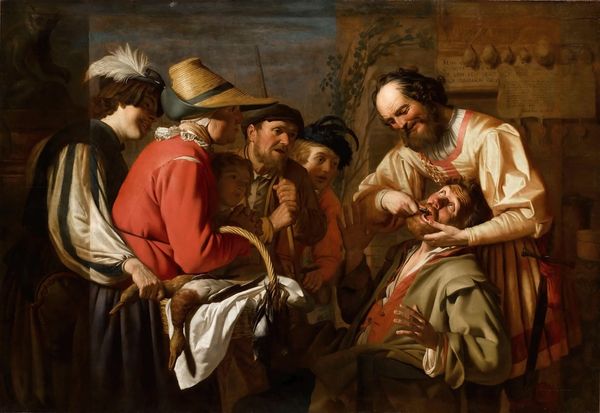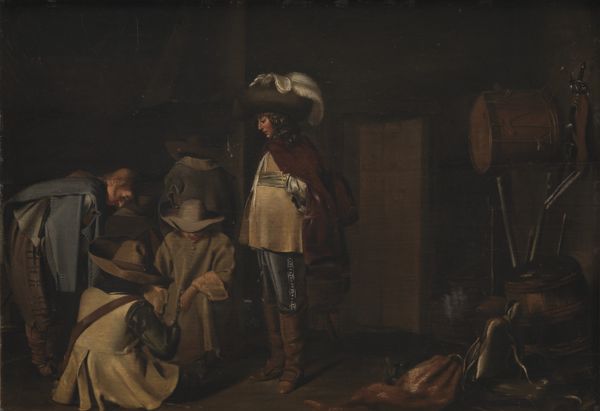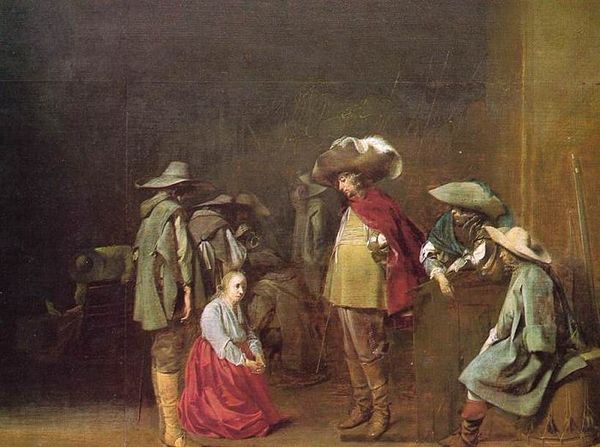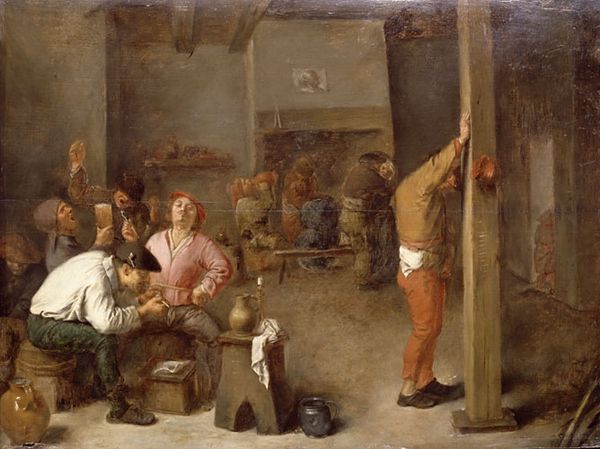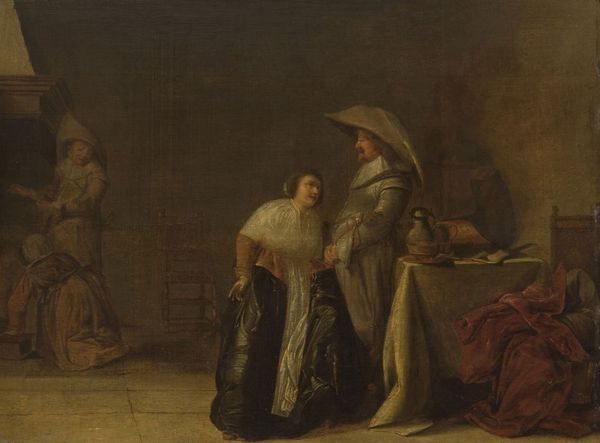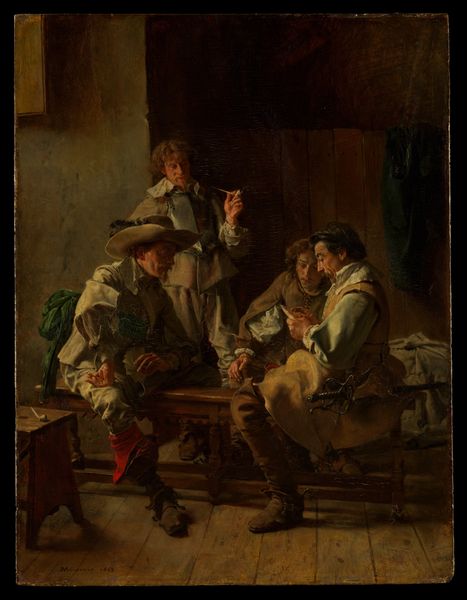
painting, oil-paint
#
narrative-art
#
baroque
#
painting
#
oil-paint
#
figuration
#
genre-painting
#
history-painting
Copyright: Public domain
Curator: Standing before us, we have what is titled, "A Young Girl Offered as a War Booty" by Willem Cornelisz Duyster. This is an oil painting with rich tonality and a narrative scene frozen in time. Editor: It's striking, even unsettling. The immediate mood is one of intense vulnerability, a clear imbalance of power radiating from the arrangement of the figures. The darkness really heightens the tension, doesn't it? Curator: Indeed. Duyster specialized in these so-called "soldier pieces," genre scenes which are sometimes connected with larger conflicts, specifically, the Dutch participation in the Thirty Years War. Though it's genre painting, these were obviously informed by history, whether it’s history or daily life, or both. Editor: I’m especially drawn to how the light catches on the girl's face, she's literally spotlit amid the gloom. And that slight upward tilt of her gaze is a silent question – a plea, even. I wonder about its intended audience. Were viewers meant to sympathize or simply to witness? I notice also that the costumes and setting do not depict antiquity. They display fashions concurrent to the time when Duyster was working. What are the ramifications when audiences might see this as potentially depicting *their* present? Curator: It's a valid question. Contextually, we should remember the growth of the Dutch Republic and its military strength through the 17th Century. But there were critics too who felt that artists celebrated military aggression far too much, that it was immoral to glorify conquest. Looking closely, notice Duyster uses carefully placed lines and compositional design to guide the eye exactly to her figure. That strong diagonal of light forces you to consider her circumstances in a stark, brutal light. And this wasn't made in a vacuum—representations of gendered and sexual violence were often instrumental in cementing ideas about civic life and morality. The subjugation of conquered peoples often justified expansion. Editor: Precisely. The idea of 'booty' isn't merely about material objects, is it? It signifies a deeper claim—dominion over bodies, over reproductive potential, over futures. Thinking about contemporary echoes, art like this asks us to grapple with the legacies of colonial violence. How is such dispossession memorialized, normalized, even eroticized in visual culture, in historical narratives? This one canvas packs such a forceful challenge. Curator: I agree. What appears at first as a glimpse into a bygone era challenges us to reckon with lasting repercussions. The past and present meet here in uneasy tension, wouldn’t you say? Editor: Absolutely. The art forces us to examine what narratives endure, and whose voices still struggle to be heard within them.
Comments
No comments
Be the first to comment and join the conversation on the ultimate creative platform.

